Advice for BJJ Competitors BJJ Training Melbourne
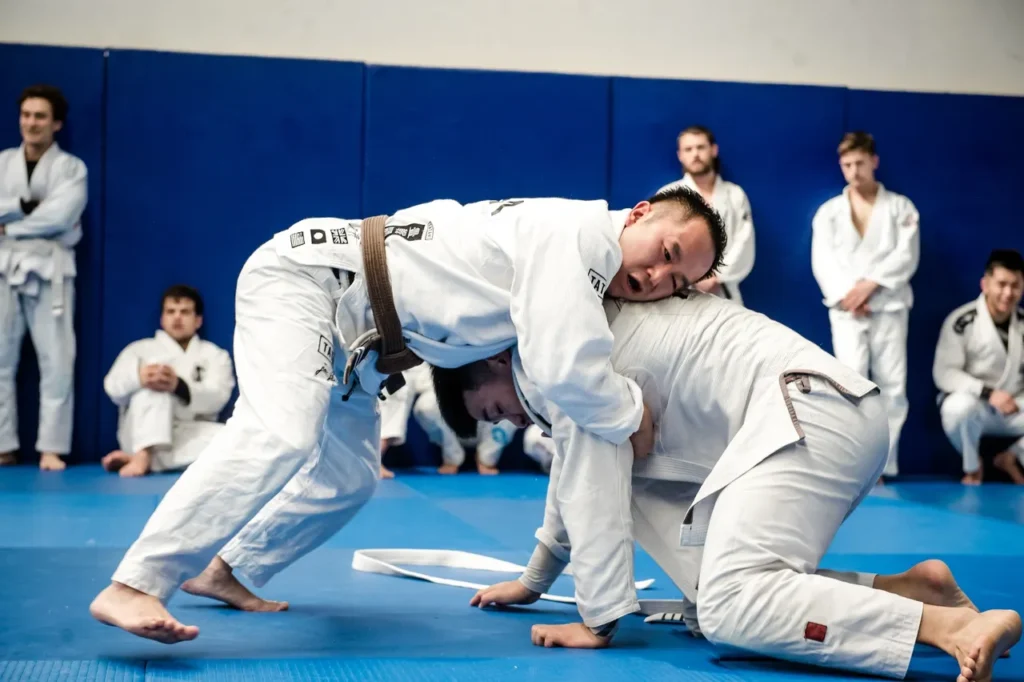
1 – Mental Skills. Don’t overthink it. It’s pyjama wrestling. Look at BJJ competition as an opportunity to improve your skills. Nobody will really care if you win or lose. 2 – Don’t give yourself any excuses. The other guy was too heavy. He’d been training longer than me. My neck is hurting, I’m going to wait until I’ve trained a few more weeks, months years. it all doesn’t matter. None of those excuses are going to help you improve your bjj so they’re all irrelevant. 3 – Give yourself the best chance of success my making sure you’re in the correct weight & age division. Sometimes you want to challenge yourself by competing against higher belts etc but to start off with let’s focus on winning matches against equally matched opponents. 4 – Have a gameplan. You don’t need to know 100s of different techniques and intricacies of each one. What you need is one takedown to start off the match. One guard pass. One attack from Guard and one attack from a dominant position. You also need to be confident that you can escape from bad positions against similar weight and belt level opponents and are able to maintain guard. That’s it. You need to be able to pull off those techniques consistently in training in the weeks leading up to the competition. Focus on the high percentage stuff we learn in class and forget the YouTube techniques. 5 – Make sure you’re Fit. You don’t need to follow a complicated program. A few times a week jump on a treadmill, rower or bike and make yourself exhausted. Get used to the feeling of being exhausted and get used to working through it. If you do these 5 things you’ll win. If you don’t you won’t win. BJJ Training Melbourne
Advice for MMA Fighters MMA Training Melbourne
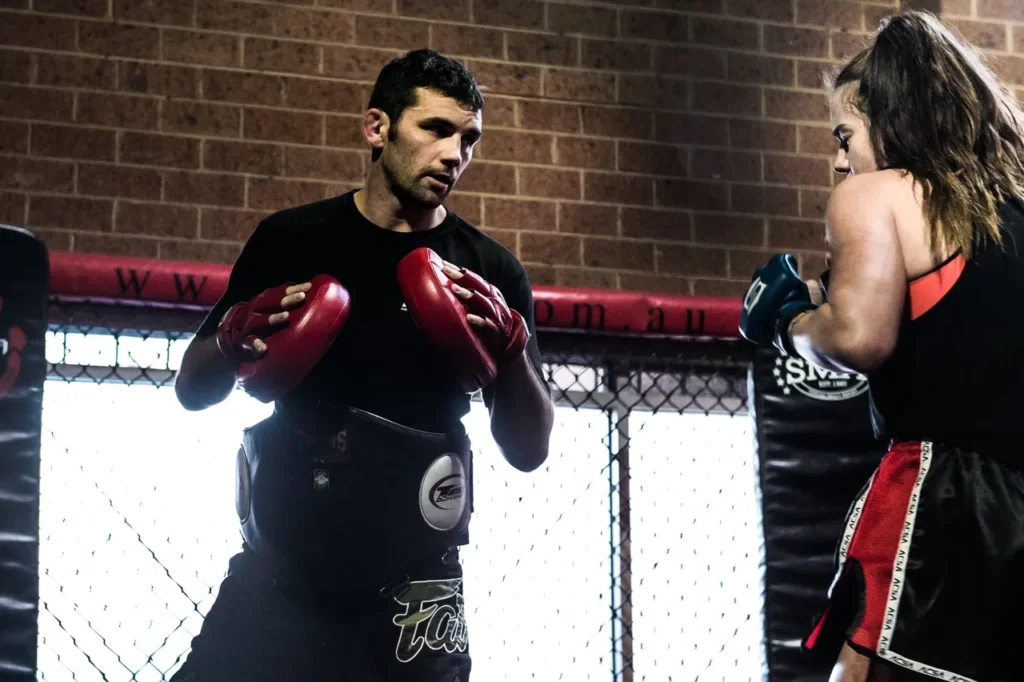
Be Consistent – Forget about ‘Fight Camps’. Train consistently at the same classes and sessions every week. Don’t train hard for a few months and then drop-off for weeks at a time. Early in your career, you need to be ready to fight all the time, often at short notice. If you arent staying ready you’ll miss out on good opportunities which could be the difference between reaching your goals or going nowhere. If you keep taking time off then needing to do intense training camps, it will cause injuries, lack of technical improvement and you won’t reach your full potential.As a coach, one of the worst things a fighter can do is to train hard in the lead up to a fight and then quit training straight afterwards. This is even worse when the fighters teammates also have upcoming fights to prepare for. It is very unlikely the coach will be prepared to put the same effort into training the fighter in the future if he knows they lack commitment. Another side of this is to not chop and change your training every couple of weeks, stick with what has been getting you results and gradually increase the volume and intensity of your training. Train Smart but be prepared to Train through Injuries. Avoid unsafe training environments. These are usually found in tough-guy gyms where every session is 100% sparring with nobody actually learning anything or improving. If you have an experienced coach and a good team they will be able to supervise and plan your training and workload in such a way that you don’t get injured. However, the reality is that MMA is a tough contact sport. You will pick up bumps, bruises and minor injuries along away the way no matter how careful you are. If you need to take three weeks off training every time you have a sore elbow you will never reach the top. At the elite levels of any sport, every player is playing injured all the time. Get used to it, strap up your injured knee, elbow or foot and keep going. Select different exercises or techniques that won’t exacerbate the injury but avoid taking time off at all costs. If training consistently to achieve your goals is important to you you will find a way to make it happen, if it’s not important you will find an excuse. Don’t give up your Day Job. Do not try to become a full-time fighter until you have a winning record in a major MMA organisation. You will need money for training fees, competition fees and other expenses. You should be prepared to fight for free for at least the first few years of your fight career so you will need an additional income to support yourself. Beware of fight offers with promises of attractive fight purses early in your career. Chances are you are being set up to lose against a more experienced local fighter. The amount of extra training you’ll get done by not working will usually end up not being worth it. Most gyms and martial arts schools do most of their training outside of work hours. Even if you quit your job in order to train full time most of your training partners will be at work. Find legitimate Coaches and a Team you can trust and stick to their advice. Find experienced and trustworthy coaches, follow their advice and stick with them. Lots of experts will appear out of the woodwork and start offering advice once you achieve some success, but be careful who you listen to and take advice from. Beware of people offering to help out for free, usually, there is still going to be a price to pay, As a coach you are more likely to want to help and focus on the fighters who have been with you form the beginning and who feel part of the team rather than outsiders, Forget about building your Social Media Profile. The amount of time and effort that people spend on this will be much better spent on working on developing your fighting skills. Let your fight results speak for themselves and then the opportunities and sponsorships will follow. There’s no point building your social media following and then getting a chance to fight on a big event like the UFC if you actually aren’t yet ready for it because you haven’t put the time and effort into your training. Forget about lucrative Sponsorship Deals. MMA is a relatively inexpensive sport compared to some others, the only expense is gym fees, occasional competition fees, training equipment which usually lasts a long time and some supplements. Being a sponsored athlete is usually good for the fighters ego but in general its not usually beneficial or necessary to their long term career. Get Experience. Jumping into professional level fights too soon without adequate amateur experience is a recipe for disaster. Get as much experience as you can especially early in your career, Amateur fights are necessary to develop and build up your skills and experience. It’s important not to fight above your level too soon as a bad loss may be very demoralizing and affect your future training and performance in fights. Fix the holes in your game before you reach the bigger stages. An MMA fighter needs to be skilled in the areas of striking, takedowns and groundwork and be able to combine them. Focusing on only one area at the expense of other skills will leave holes in your game which will be easily exploited by more experienced future opponents. Competing in other combat sports such as BJJ or amateur Kickboxing is a good safe way to gain valuable experience and develop your skills so that you are more well rounded and more of a threat when you fight in MMA. MMA Training Melbourne MMA Classes Melbourne Best MMA Gyms Melbourne
How to get your BJJ Blue Belt BJJ Training Melbourne

One common problem for new Brazilian JiuJitsu students is understanding how to get promoted to the next belt. Asking what you need to do is frowned upon and the usual advice is ‘Just keep training and don’t worry about the belts’ or ‘You’ll get the belt when you’re ready for it’. This isn’t useful advice. The belts are there for a reason. If they aren’t important then why bother having them at all? The main purpose for belts in BJJ is as a general indicator of skill level. A blue belt should have a higher level of BJJ skill than a white belt and a purple belt should have a higher skill level than a blue belt. The skill will be acquired through consistent and effective training and the belts serve as a motivator to keep training consistently and as an indicator of your progress and a goal to aim for. It’s difficult for BJJ students to know exactly what they have to do. In other styles, there are agreed upon grading criteria which are decided on by a centralized federation. Karate has specific techniques and Katas are required to progress to each belt level, Judo also usually has specific techniques for each belt and the student will also need to accumulate points from competition to progress. This doesn’t tend to happen in BJJ. Each affiliation, club, and instructor has their unique criteria to progress to the next belt, and more often than not the student has no idea what these criteria are. While I’m not saying that this is a bad thing, it can get very confusing for the white belt who just wants to know what they need to do to progress and eventually one day get a black belt. Here is what I believe are the keys for White Belts to get Graded to Blue Belt which is often the most difficult rank. Usually, your chances of getting graded will be based on a combination of the following factors: Technical requirements Not every academy will have a list of specific technique requirements but there will usually be a general outline of techniques & skills you should be able to perform well by the time you get to Blue belt. You need to be able to perform a few takedowns & guard passes consistently in training, you need to know a few submissions & sweeps that you can hit consistently from several positions, and you need to retain your guard and be able to escape from the most common pin positions against sparring partners with similar skill levels. These elements will give you the basis for developing a well-rounded game that will serve you well as you progress up through the ranks to higher belts. Competition Results Many clubs don’t focus on competition and don’t see it as an important requirement for Grading. I encourage all my students to compete whenever they can. My job as an instructor is to help my students improve as much as possible. I’ve been involved in martial arts for over 30 years and in my experience the people who compete improve more quickly. BJJ is a relatively safe sport without the danger of concussion or other injuries that can happen with other combat sports. I see no reason for the students not to jump in and compete whenever they can if they want to improve. Competition is also a useful indicator of skill level and a good sign that you’re ready to get promoted. If you are regularly winning your divisions at white belt level then it’s time to get promoted to blue belt. There’s no point in ‘sandbagging’ and continuously turning up to beat white belts at competition if you’ve already been training for ten years. Attendance Some martial arts academies grade solely on attendance. After attending a certain number of classes for some time, you will receive your next belt. While I’m not a fan of this, I think it is important to emphasize the importance of attendance. If you don’t train consistently then you won’t improve. It also sets a bad example for other students in the class. If a student doesn’t train in my classes at least two or three times a week, I won’t give them a belt promotion. Being a good training partner and a good fit for the academy This is probably one of the least understood parts of grading criteria. In addition to being technically proficient, getting good competition results, and attending classes regularly, the student must also be a good fit for the team. If the student trains dangerously regularly injuring his training partners then there’s a good chance the coach won’t want him to stick around and will either kick him out or just hold back on promoting him hoping that he’ll eventually get the hint and settle down. Every BJJ gym has a unique mat culture. Some are strict and more focused on a traditional martial arts atmosphere, and some are more laid back and easygoing where students can just turn up whenever suits them and take rounds off from rolling if they don’t feel like it. The students will inevitably gravitate to the culture that suits them. A BJJ coach is unlikely to promote a student who they feel isn’t a good fit for the culture of his team. If the student is too lazy or unwilling to put in the work required then it would set a bad example to the other students to promote them and so the student must decide if they are going to do what is required or find another gym with a culture that better suits them. BJJ Training Melbourne BJJ Fairfield
Is it harder to get a BJJ black belt in 2024? BJJ Training
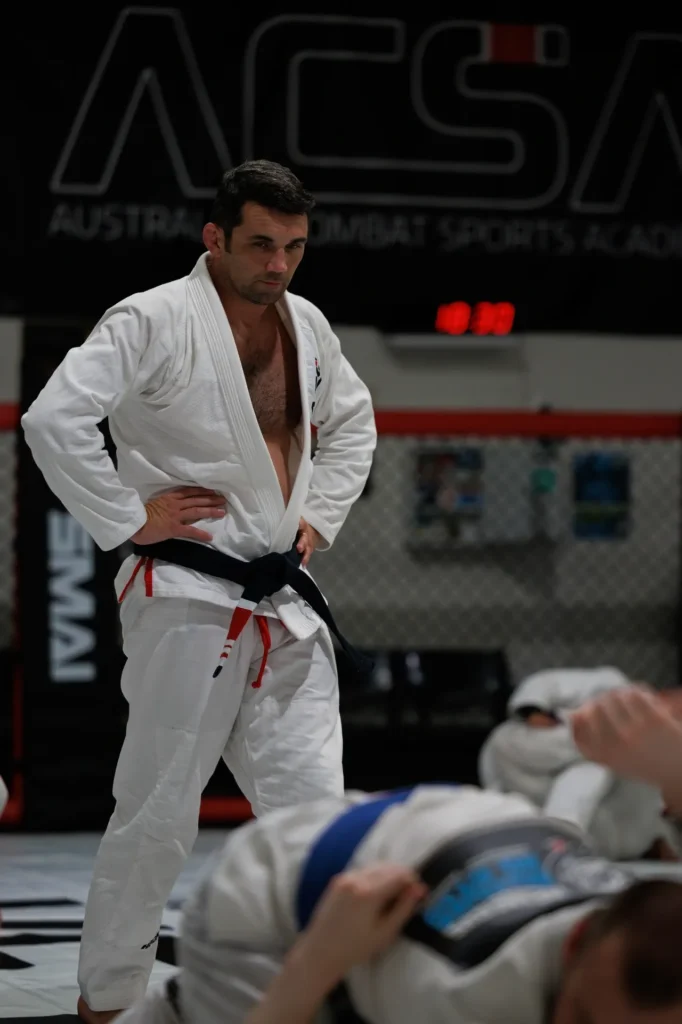
Today’s top BJJ competitors would be able to beat those of two decades ago, especially under BJJ or grappling rules. It’s a natural progression, much like how any sport evolves. Today’s sprinters run faster than those from half a century ago.But this doesn’t necessarily mean it’s harder for the average student to become a Black belt now than it was back then. There is more information available about BJJ now than ever before so it’s easier to learn. More schools, More instructors, More instructional videos, and more online learning. It’s much easier to learn BJJ these days whereas in the past there were very few sources of information and there was a culture of instructors withholding information. Attaining a BJJ black belt seems more attainable nowadays. The sport has become more accessible, with greater opportunities for training and learning. Consequently, more people are aware of BJJ & want to begin training. Overall BJJ training is much easier these days resulting in a higher retention rate and a subsequent increase in the number of black belts. However, there’s been a big shift in the goals of most BJJ students. There’s an inevitable focus on training specifically to excel within the sport’s rules. When I first began training the 1990s, the focus was predominantly on real fighting. All the Techniques taught then were applicable not only in the sport of BJJ but also in MMA or self-defense. Over time coaches & competitors began focusing more on techniques that would bring success in the sport but were unlikely to work in a real fight.There’s a shift in the demographics of practitioners. In the early days, BJJ attracted those wanting to compete in no-holds-barred fights or seasoned martial artists seeking to enhance their skill set. Today, a significant portion of BJJ students have no aspirations for competitive fighting. Instead, they’re primarily interested in mastering intricate techniques, often detached from real-world combat applications. BJJ has gradually become more similar to traditional martial arts, emphasizing excessively complicated techniques that will only work under the BJJ rules but will usually fall apart when put under pressure. There are more and more techniques and nuances being added to the techniques but realistically these things are likely to be of little use in the real world. Although the best BJJ grapplers of today would beat those of 20 years ago (under BJJ rules), I believe an average grappler from 20 years ago would beat today’s grapplers in a real fight. Back then, BJJ was simply a much tougher and less welcoming sport. Those who didn’t have natural toughness didn’t make it past the first session. The students were not gently eased into training back then. All new students were smashed by the seniors in their first session to demonstrate the effectiveness of BJJ. The resulting ‘only the strong survive’ environment led to way fewer people taking part in the sport, but those who did were stronger and more resilient BJJ Training Melbourne BJJ Fairfield Melbourne
The reality of being an MMA Fighter MMA Training Melbourne

As an MMA Fighter, coach (and now as a promoter) you encounter many aspiring fighters who say they will do whatever it takes to achieve success in the fight game but what they really mean is they just want to do it if it’s going to be fun and easy and they can win all the time. The reality is if you want to get to the top levels in this sport or any sport it’s going to be very tough and also you have to be comfortable with the fact that you aren’t going to win all the time.The challenges and fear of losing cause many fighters to back out or find excuses when faced with a bigger challenge or even worse waste the most important years of their fight career building an undefeated record against hand-picked opponents rather than actually testing themselves and fighting the best competition available.If you want to achieve greatness and be regarded as a great fighter you need to compete against other great fighters and with this will always come the risk of losing but it’s how you deal with these losses that make the difference.Coaches in Thailand would always ask new western fighters about their fight record but were always more interested in the losses than wins. If a fighter had no losses on their record they couldn’t take them seriously because they knew they haven’t really been tested.In the early days of MMA it was possible to build undefeated records but now I think the sport has reached a new level of maturity.Everyone all over the world now has access to the same knowledge, information and training methods and it has created an even playing field. This means that anyone can lose no matter how good they are. I think this will create a much healthier career path for fighters. Take the challenging fights to grow in experience and skills rather than padding your record and then getting exposed when you reach the big show. MMA Training Melbourne mma classes Melbourne best mma gyms melbourne
The Popularity of BJJ
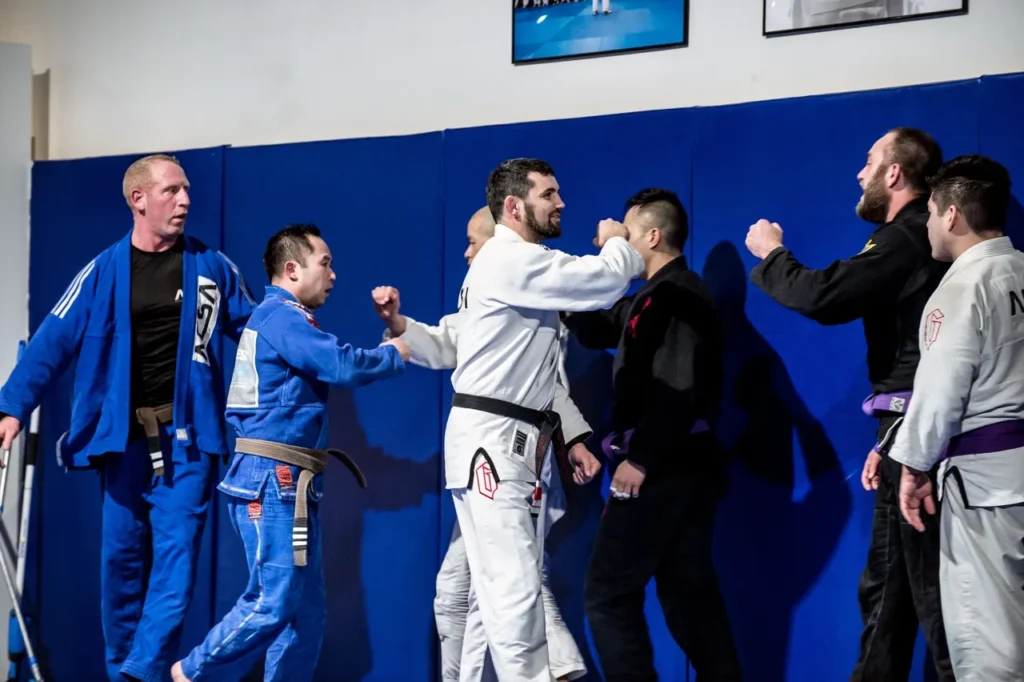
In recent years, Brazilian Jiu-Jitsu has seen a remarkable surge in popularity all over the world. What was once a niche martial art has now evolved into a mainstream phenomenon practiced by a wide range of people including celebrities such as Tom Hardy & Facebook CEO Mark Zuckerberg. One of the most interesting things about the popularity of BJJ is its growth among adults. Most styles of martial arts which are predominantly practiced by kids and the adults who do train usually started when they were kids. BJJ is unique in its ability to attract adults who have had no previous martial arts training or even any other sports background. Here are some of the reasons why I think BJJ has become so popular. Easier to learn and master than other styles of Martial Art BJJ’s emphasis on ground fighting and submissions distinguishes it from other martial arts. Kicks & Punches seem easier to learn but they take years of dedicated practice to master, and it’s very difficult to perform them effectively against a resisting opponent who is punching back. BJJ can appear confusing at first, but it’s easier to learn and use than most other martial arts styles. The reason for this is that it focuses on controlling your opponent and stopping him from moving while you use your techniques. Because of this aspect, it is especially appealing to adults who may not have the strength or speed of youth but can excel through technique and strategy. Practical Self Defence Skills BJJ offers the opportunity to learn simple yet effective self-defense techniques. It empowers practitioners with the confidence and capability to protect themselves in real-world scenarios.. Having the confidence that you can escape from someone who is trying to hold you down or headlock you is in my opinion more a reliable option for self defence than practicing groin strikes or eye pokes. The use of deadly force is not always necessary in self-defense situations. In most cases, the best solution is to use grappling techniques to restrain an opponent until they calm down, and BJJ is the right tool for this. One of the best ways to get Fit! Beyond self-defense, BJJ provides a dynamic full-body workout including cardiovascular fitness, strength training, and flexibility. Although it may seem like a tough workout at first it won’t take long until you are making it through the session and feeling great but exhausted. BJJ training will improve your endurance, build muscle, and enhance your overall fitness levels. And for most people it’s a lot more fun than just working out at the gym. One of my favorite things as a BJJ coach is seeing the progress in new students from when they first start training until a few months later when they can keep rolling through every round of sparring. Breaking a Mental Sweat BJJ is not just a physical activity but also a mental one. BJJ is sometimes referred to as a physical Chess game. BJJ’s strategic and problem-solving nature demands critical thinking and adaptability from practitioners. This mental stimulation not only enhances cognitive function and focus but also boosts self-confidence both on and off the mat. Camaraderie & Life Long Friendships The inclusive and supportive atmosphere of the BJJ community fosters camaraderie.. While a BJJ class initially appears like a bunch of people trying to murder each other, closer inspection will reveal that many of the students are close friends. BJJ students come to class to leave their real world problems behind and just focus on challenging themselves and improving with the help and friendly rivalry of their teammates and training partners. This feeling of combined effort to overcome adversity leads to close friendships. Influence of MMA The popularity of the UFC has significantly amplified interest in BJJ. The UFC was initially conceived by the Gracie family to demonstrate the prowess of Brazilian Jiu-Jitsu on a global stage. A significant portion of new BJJ enthusiasts are often introduced to the sport through UFC exposure, igniting a desire to acquire self-defense skills after witnessing its effectiveness in action. It’s amazing to see how far BJJ has come in terms of popularity since I did my first-ever lesson at the Budokawi dojo in London way back in 1998. I would never have imagined it would become such a popular sport and i can’t wait to see what the future holds.
Self Defence Training

I first became interested in Mixed Martial Arts & Brazilian Jiujitsu because I saw it as a realistic way of testing martial arts and fighting skills against a resisting opponent. I wasn’t convinced that the techniques used in my Karate point sparring would work in real life when confronted with a big angry, aggressive opponent. Especially if he isn’t familiar with the rules and formalities of traditional martial arts and just wants to beat you up. If only there was some way of testing your techniques realistically without going to jail or hospital. Luckily after I’d been doing Karate for about 3 months I saw a report on late-night TV about the new sport of UFC which was just starting in the USA (this was the build-up to UFC 3). It looked excessively violent and gruesome at the start but it seemed like a good way of finding out what would work in a real fight. Up until this point, it was commonly believed that some styles were just combat sports and others were real martial arts and therefore better for self-defense. From observing MMA events it became apparent that almost all the successful fighters came from a combat sports background (wrestling, kickboxing, Judo). The styles of martial arts that focused exclusively on self-defense and deadly killing skills had many explanations for their lack of success in the MMA arena and these reasons may also explain the effectiveness of combat sports. So what are the benefits that might make training in MMA or combat sports more suitable for self-defence? The key to making your MMA or combat sports training suitable for self-defense and avoiding unrealistic techniques is to ask – would I want to use this move or this strategy if my life depended on it?
How to get your BJJ Black Belt BJJ Training Melbourne

BJJ differs from other martial arts in that there are no clear requirements for getting your black belt or if there are, they vary from school to school. Other traditional martial arts, on the other hand, usually have very clear-cut criteria about what you need to do to achieve each belt on the way to becoming a black belt. In karate, for example, there are certain techniques you have to be able to demonstrate and katas you have to perform before you can move up a belt. Even in Judo, which is the closest thing to BJJ, there is a progression path used all over the world for accumulating competition points, demonstrating certain techniques, and then performing the Nage no Kata to obtain a black belt.Grading requirements can vary greatly from place to place in BJJ. Some schools measure belt advancement solely by the amount of time served and classes attended, while others focus on the number of techniques demonstrated for each belt. Others, such as my original academy (Carlson Gracie London), based belt progression on performance in competition. If you didn’t win a tournament at your current belt then you don’t progress to your next belt.Your instructors will pick the best grading criteria that work for them, and your school will probably have its own variant, but in general, there are several keys to making progress in BJJ. Don’t focus on the belt. Instead, focus on improving and learning. It usually takes 8-10 years of consistent training to achieve black belt status. Some people get it faster if they train full-time. Others, like myself, will take longer. (12 years in my case). If you enjoy the training and it becomes a part of your life, you won’t care if it takes 3 years or 25 years. The journey is more important than the destination. Avoid Burn-Out Aim to train consistently rather than overdo it at the start. Don’t train 7 days a week for 3 months and then quit. Train 3 times a week for 7 years and then you’ll achieve your goals. Compete. I’ve been training in BJJ for approximately 22 years. The people who compete always make more progress and stick with their training. You don’t have to be a full-time competitor or quit your job to focus on BJJ competition but my advice would be to compete at least a few times at each belt level along the way to get accurate feedback on your strengths and weaknesses. 5 to 10 minutes in real competition can be the same as 6 months of relaxed training in terms of your development. Real Training Be clear about what counts as training time. If you’ve been training in BJJ for 8 years but have had several 6-month breaks or periods where you only trained once a fortnight then that doesn’t count as 8 years of training. Also, if your training session consists of you trying to overpower and tap out the new white belts rather than focusing on your learning and development then that also doesn’t count as real training. Be a good training partner. Your coach has your best interests at heart. They want you to make progress and eventually get your black belt because it reaffirms to them that they are doing a good job as a coach. However, they also want what’s best for the other nineteen students on the mat. If you’re a crappy training partner or even worse a dangerous training partner who risks injuring the other students there’s a good chance the coach doesn’t want you on the mats and won’t promote you. Learning how to be a good training partner is perhaps the most important BJJ skill you can learn. BJJ Training Melbourne BJJ Fairfield Melbourne
The Benefits of Brazilian Jiu-Jitsu for Kids
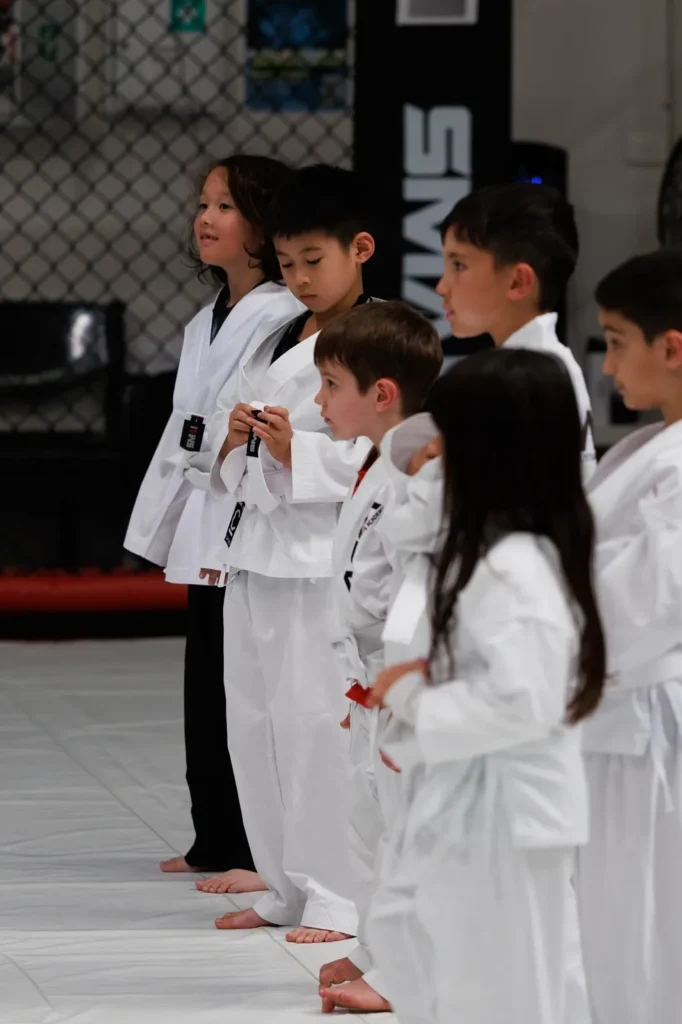
In today’s fast-paced world, parents are constantly seeking activities that not only keep their kids physically active but also foster important life skills such as discipline, confidence, and resilience. Brazilian Jiu-Jitsu (BJJ) has emerged as a popular choice for many families, offering a unique blend of physical exercise and mental development. In this article, we’ll explore the numerous benefits that Brazilian Jiu-Jitsu provides for children, from improved fitness to enhanced problem-solving abilities. Physical Fitness: Self-Defense Skills: Discipline and Focus: Problem-Solving and Critical Thinking: Building Confidence and Resilience: Brazilian Jiu-Jitsu offers a wide range of benefits for children, from improved physical fitness to enhanced mental and emotional well-being. By participating in BJJ classes, kids develop important life skills such as discipline, focus, problem-solving, confidence, and resilience. Whether they’re looking for a fun way to stay active or seeking practical self-defense skills, Brazilian Jiu-Jitsu provides a rewarding experience for children of all ages. We have Kids BJJ Classes at Australian Combat Sports Academy every Monday at 4.15 pm & Saturday Mornings at 10.15 am. Book your kids in today to unlock the benefits.
How long does it take to get Good at Brazilian Jiu-Jitsu?
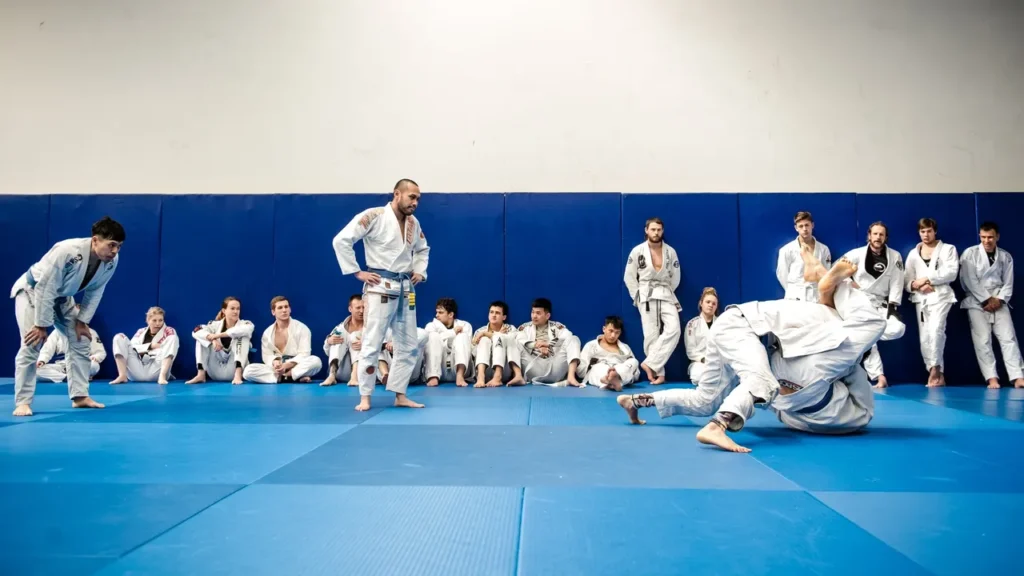
Recently I was asked an interesting question by a new student. This student had considerable experience in other martial arts and had just completed the trial week of our BJJ program. He had enjoyed his training over the week and was excited to continue. He approached me at the end of the class and asked ‘ How long does it take to get good?’ Since becoming a full-time coach I’ve spent 100’s of hours attending Martial Arts and Fitness business courses focusing on Marketing, how to convert trials into students, upselling, and many other related topics. I knew there was a perfect way to ‘re-frame’ the question, get him signing up, and resulting in a high five and three-year commitment to getting his black belt, however, the question came at the end of a long week of tough sessions, teaching classes, training fighters and also working hard on my training so I gave him the honest answer. It might take your whole lifetime to get good and even then that might not be enough. What I meant is that Jiu-Jitsu isn’t a sequence of secret moves that you can memorize and then you’ll be invincible and receive your black belt in three years. It’s tough, you learn the moves but your training partners learn the moves too so they can shut you down then you keep battling back and forth night after night, week after week for years and years until eventually one of you quits. This is the reality of Jiu-Jitsu training that separates it from many other martial arts. It is relatively ‘safe’ so you can go pretty hard almost every time you train without needing to pull your punches. You cannot comfort yourself by telling yourself that I would’ve won that match if I’d hit him with my power kick. You will get tapped out a lot on your way to getting a black belt and you need to develop an ego that will allow you to deal with this short-term inconvenience for your long-term benefit. I also explained to the new student that even though it sounds hard the training is fun, and that’s why people stick to it. Before long you forget about the far off goal of getting a black belt and just enjoy the process of getting on the mat and testing yourself and your skills. Afterward, though I realized that there is another way to look at the question “How long does it take to get good at Jiu-Jitsu?’ This is an interesting question because it’s very subjective, one person’s idea of ‘Good at Jiu Jitsu’ may be very different from others. Some may think being good at Jiu-Jitsu means winning a world title at the Black Belt division whereas another may define it as the ability to defend yourself. Very few people get involved in Jiu-Jitsu because they want to win world titles. Most people begin training because they want to get fit, lose weight, or learn self-defense. My definition of being ‘good’ at Jiu-Jitsu is simple. Can you defend yourself and defeat a larger and stronger opponent using Jiu-Jitsu techniques? If you can then your training has worked. One of the strengths of Jiu Jitsu compared to other martial arts is that it is possible to achieve this goal in a relatively short time (6 months to 1 Year). With other fighting styles, it is much harder to achieve this goal. Styles like boxing or karate take much longer to get the same result. It’s possible that some students can hit very hard and defend themselves after six months of boxing or karate training but it’s always difficult to say if that is due to the training they received or just down to their natural power. With Jiu-Jitsu, the results are very consistent. Everyone can learn the same basic strategy and the techniques aren’t complicated. Another way of looking at this question is relevant to fighters and martial arts from all styles and backgrounds. The important goal is not to just get ‘Good’, the goal is to keep continually improving. To get better than you were last class, or last week last year, or in your last tournament. Even if you’re winning every match, is there anything you could be doing better? Making that armlock tighter, finishing that sweep, or improving defense. So in short it should take around six months to one year until you can defeat an average untrained opponent using Jiu Jitsu (Provided you are being taught correctly and are training consistently) however you can spend your entire lifetime improving and perfecting your Jiu Jitsu. BJJ Training Melbourne
